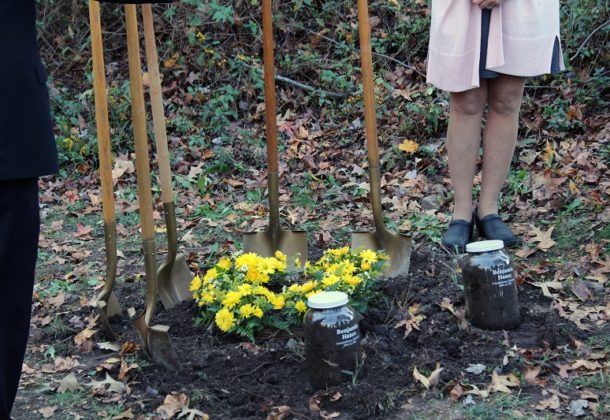3 Students Earn Just Society Scholarships

The St. Mary’s County Just Society Scholarship was awarded to three high school students for their artistic submissions associated with racial justice as it relates to the lynching of Benjamin Hance in 1887, the only recorded lynching in the county’s history.
This year’s inaugural scholarship invited students currently enrolled in a St. Mary’s County public, private, or home school high school program to create an original work of art that focuses on a “Just Society” as a community remembrance of the lynching of Benjamin Hance. The categories included performing arts, visual arts, or language arts.
The overall winner was Cheyenne Toma of Leonardtown High School. Runners-up were Arden Mclearen and Katelyn Freese of St. Mary’s Ryken High School.
Cheyenne will receive $500, and the runners-up will each receive $250.
The funds for the scholarships were donated by the Friends of the St. Clement’s Island & Piney Point Museums, National Association for the Advancement of Colored People, Unified Committee for Afro-American Contributions, Southern Maryland Electric Cooperative, St. Mary’s County libraries, Lisa and Michael Blackwell, and Barbara Thompson.
Cheyenne submitted a piece that crossed category lines, as both language arts and performance art. Cheyenne wrote a very complex and moving set of lyrics, with an original and poetic use of language. Titled “Tainted Grounds,” the song tells Benjamin Hance’s story, as well as many untold stories of injustice not just in Maryland but in America. The use of the cello and violin to create the mood for this piece is excellent, as is the overall musical concept. The emotional approach is wonderful, and the lyrics are highly original and full of intellectual heft.
Arden’s clay sculpture depicts clay figures “taking action.” The figures seem to represent Hance’s human community, so they are an extension of the victim himself – the focus is not on the perpetrators. The acting figures are gray – not brown – so they may be meant to be purposefully ambiguous as to racial identity, suggesting they could be anyone, even a remorseful perpetrator who wishes to undo the deed. At the same time, it does not gloss over the sadness and irrevocability of the deed. It is very interesting in concept and design. It allows ambiguity but seems to reflect thoughtful decisions and emotional involvement. The artist had a vision and was able to realize it.
Katelyn’s mixed media collage is clear in concept, visually effective, and skillfully done. The thematic motif of eyes is powerful, and it suggests a somewhat diverse community of eyes through her skillful use of color. It makes the viewer wonder who saw what and how they felt about what they saw. The central noose with its crying eyes is especially powerful. The words painted on the frame “no justice, no verdict” fits with the suggestion that many eyes saw the crime, yet the perpetrators are hidden and justice is denied.
The scholarships were awarded November 1 at a historical marker unveiling ceremony of justice and equity at the Old Jail Museum in Leonardtown. The marker tells the story of Benjamin Hance, a young African-American man who was arrested May 27, 1887, in Leonardtown and taken to the Old Jail. A mob broke in on the night of June 17, held the jailkeeper at gunpoint, and removed Mr. Hance from his cell after breaking down the door. They carried him to a site just out of town (now occupied by the Port of Leonardtown Winery and park) and proceeded to hang him from a witch hazel tree.






















